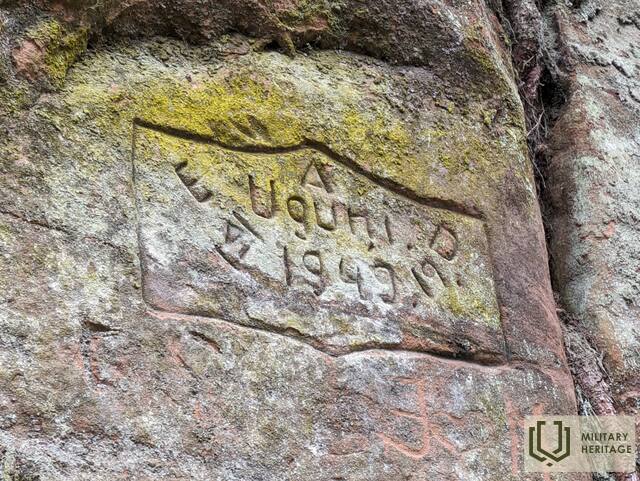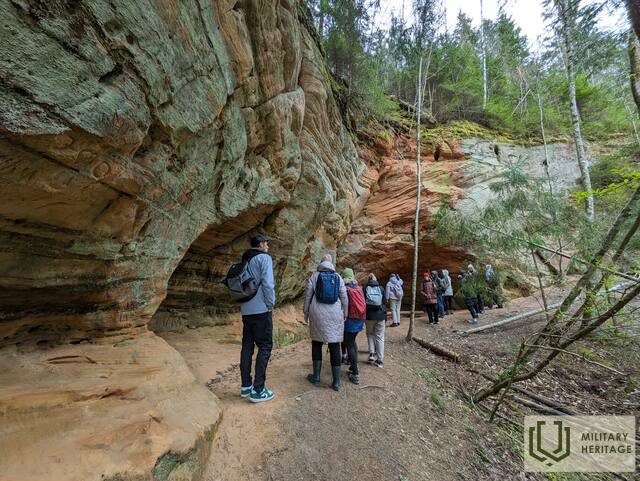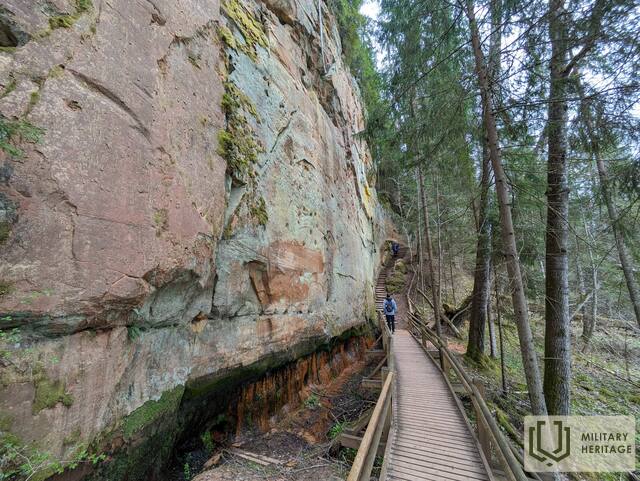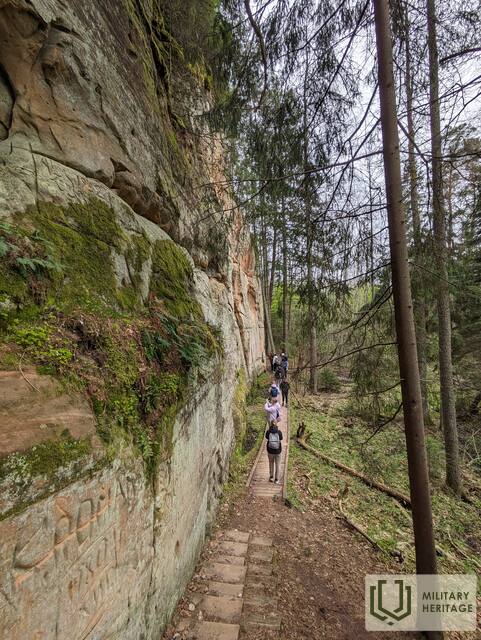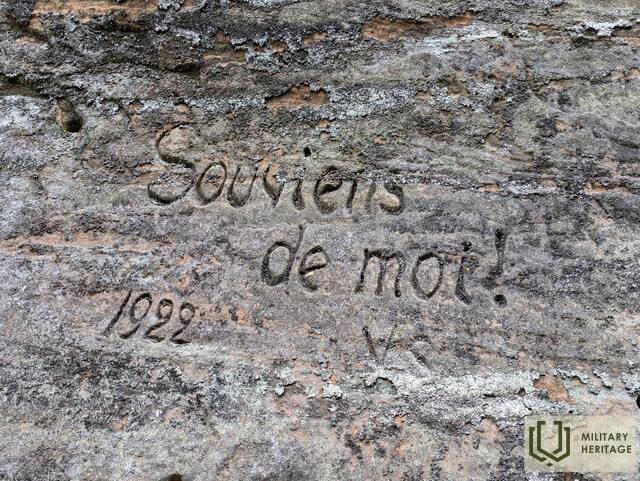Istoriniai įrodymai Līči – Laņģi skardžiuose
Fragmentai iš kraštotyros entuziasto Aivaro Vilnio pasakojimo apie istoriją ir jos liudijimus, rastus Lodėje ir Liepoje, dabartinėje Cėsių savivaldybėje.
"Raudono molio gruntas, plytos, 400 milijonų metų šarvuočiai, uolų miestas, kurio smiltainio sienos atskleidžia visą Latvijos istoriją, apaugę namų pamatai – toje vietoje, kur kažkada būriavosi prieškario Latvijos elitas. Ir visa tai Liepos valsčiuje, Priekulių rajone, už nepatrauklių sovietmečio blokinių namų, kuriais gamtos mylėtojai, apsukdami savo praeitį, vaikšto."
(..) Aivaras beveik viską žino apie „Lodį“, plytas ir Liepą. Jis gimė Liepoje, o visa jo šeimos istorija susijusi su „Lodės“ gamykla, į kurią 1977 m., vos baigęs vidurinę mokyklą, kreipėsi dėl darbo ir tebedirba. Aivaras, kaip ir tėtis, toliau tyrinėja parapijos istoriją, ypač daug dėmesio skirdamas plytų gamybos istorijai, kuri tapo didžiausia jo gyvenimo aistra.
(..) 1973 m., kai buvo įkurtas Gaujos nacionalinis parkas, valstybės saugoma pateko ne tik kilometro ilgio smiltainio siena [Līči – Laņģi skardžiai], bet ir užrašai ant jos. (..)
Alternatyvią istoriją atskleidžia įbrėžimai ant uolų sienų: vieni skaidrūs, kitų neįmanoma iššifruoti. (..)
„Krylovas 1942 m. Tai Aivaras žino apie šį užrašą. „Vokiečių okupacijos metais rusų karo belaisviai buvo sumesti į valstiečių namus, todėl supratau, kad vienas iš jų buvo subraižęs užrašą. Pagalvojau, o režimas juk ne toks atšiaurus, nes kaliniai galėjo eiti pasivaikščioti. Vėliau sužinojau, kad tuo metu „Lejas Lodės“ buvo vokiečių belaisvių stovykla, kilusi iš gruzinų giminės. Jis buvo privilegijuotas ir draugavo su „Kalna Lodės“ savininku. Kai 1942 m. Liepoje buvo sušaudytas vokiečių karininkas, kalinių stovykla buvo perkelta į Valką. (..) „1909. metai K. Maizītis“. Aivaras siūlo, kad jaunystėje čia autografą paliko Lāčplės ordino kavalierius Kārlis Maizītis, 1919 m. Pinkie mūšyje kritęs ir palaidotas Liepos kapinėse.
(..) Aivarui Vilniui ypač reikšmingas atrodo vienas užrašas. Tvarkinga rašysena didelėmis raidėmis parašyta „Gaisrai“, o šalia – data: 1949 m. birželio 19 d. Nujaučiate, kad, skirtingai nei kiti, šis pagamintas ne šiaip sau. "Kovas buvo evakuacijos metas, birželis – išleistuvių metas. Šioje pusėje tokio namo vardo ar pavardės nėra. Pripažįstu, kad po karo "Uguņi" buvo karingai nusiteikusių jaunuolių būrelis. Tai, žinoma, tik fantazijos šia tema, nes nėra jokių įrodymų."
(..) Smarkiai lyja, klimpstame į purvą, bet nepasiduodame – lėtai keldami moliu aplipusias pėdas braidome toliau. „Lodės molio karjerą žino visi pasaulio paleontologai“, – pradeda Aivaras. 1970 metų pavasarį geologas Visvaldis Kuršs molio karjere aptiko devono žuvų fosilijų. Tai buvo ištisos kapinės. Radinys buvo unikalus tai, kad pirmą kartą paleontologijos istorijoje buvo rastos ištisos žuvų fosilijos, o ne tik fragmentai. Šis atradimas sukėlė revoliuciją moksle, nes buvo įrodyta, kad šarvuotų žuvų rūšis Asterolepis ornata atrodė kitaip, nei manyta anksčiau, ty turėjo ilgesnę uodegą. Tačiau viskas prasidėjo 1970-ųjų pavasario popietę, kai Anna Babrė stovėjo karjere ir skaičiavo krovinius. Darbas jau artėjo prie pabaigos, kai Ana pastebėjo, kad tam tikroje vietoje formuojasi lygus paviršius, kuriame matyti įvairūs kaulai. Būtent ji, sukryžiavusi rankas virš galvos, sustabdė buldozerius ir nuėjo pas viršininką pasakyti apie atradimą. Kasinėjimai buvo tęsiami vadovaujant geologei Lyubova Lärska. Kai kurias „Lodės“ karjere rastas devono laikų žuvų fosilijas galima apžiūrėti Latvijos gamtos istorijos muziejuje.
Hauka, E. Eikime paskaityti šarvuotas žuvis arba ieškoti prarasto laiko Līču-Lēģi uolose [internete]. [Žiūrėta 2024 04 19]. Prieiga: https://www.tvnet.lv/6973960/ejam-lasit-brunuzivis-jeb-zuduso-laiku-meklejot-licu-langu-klintis




